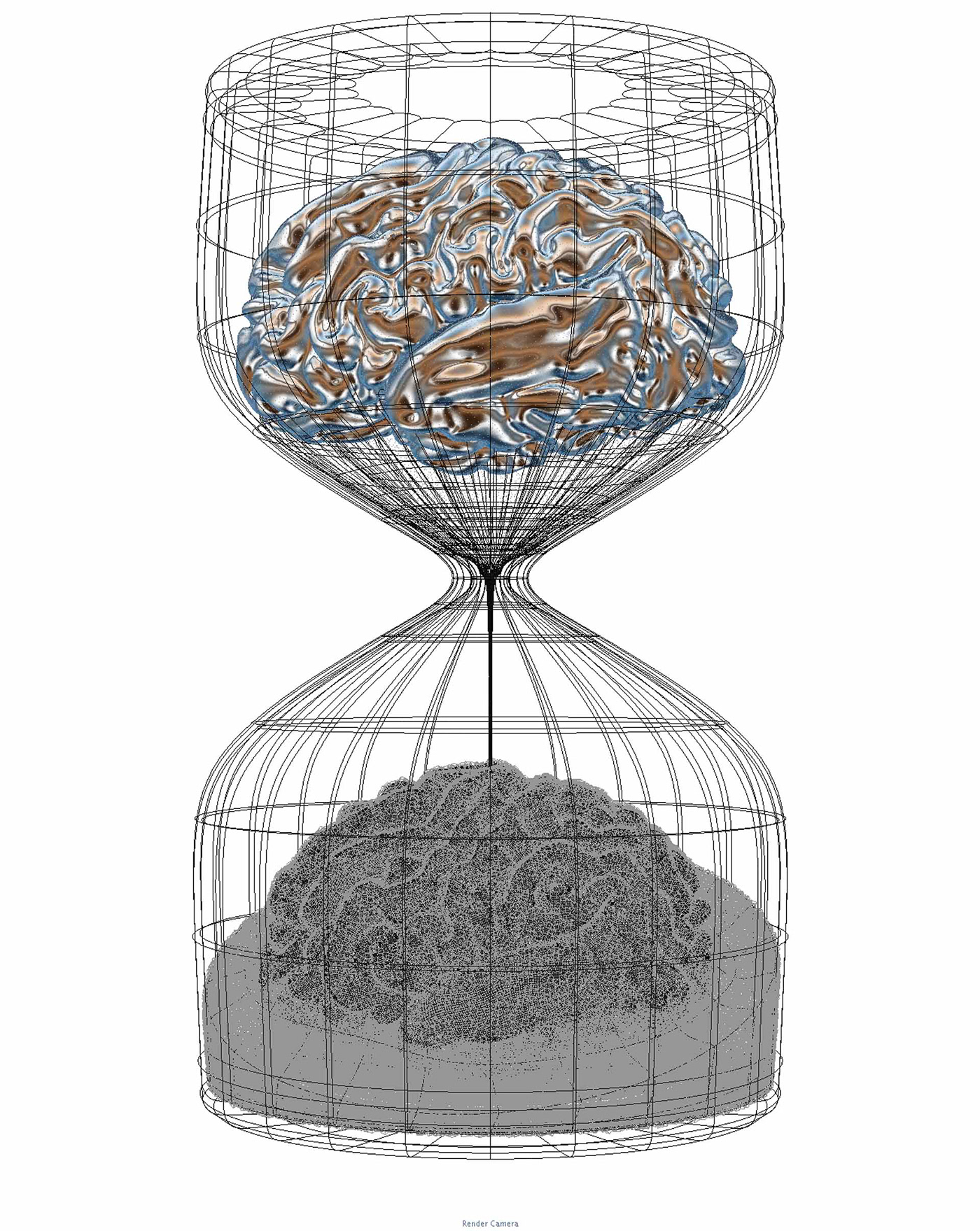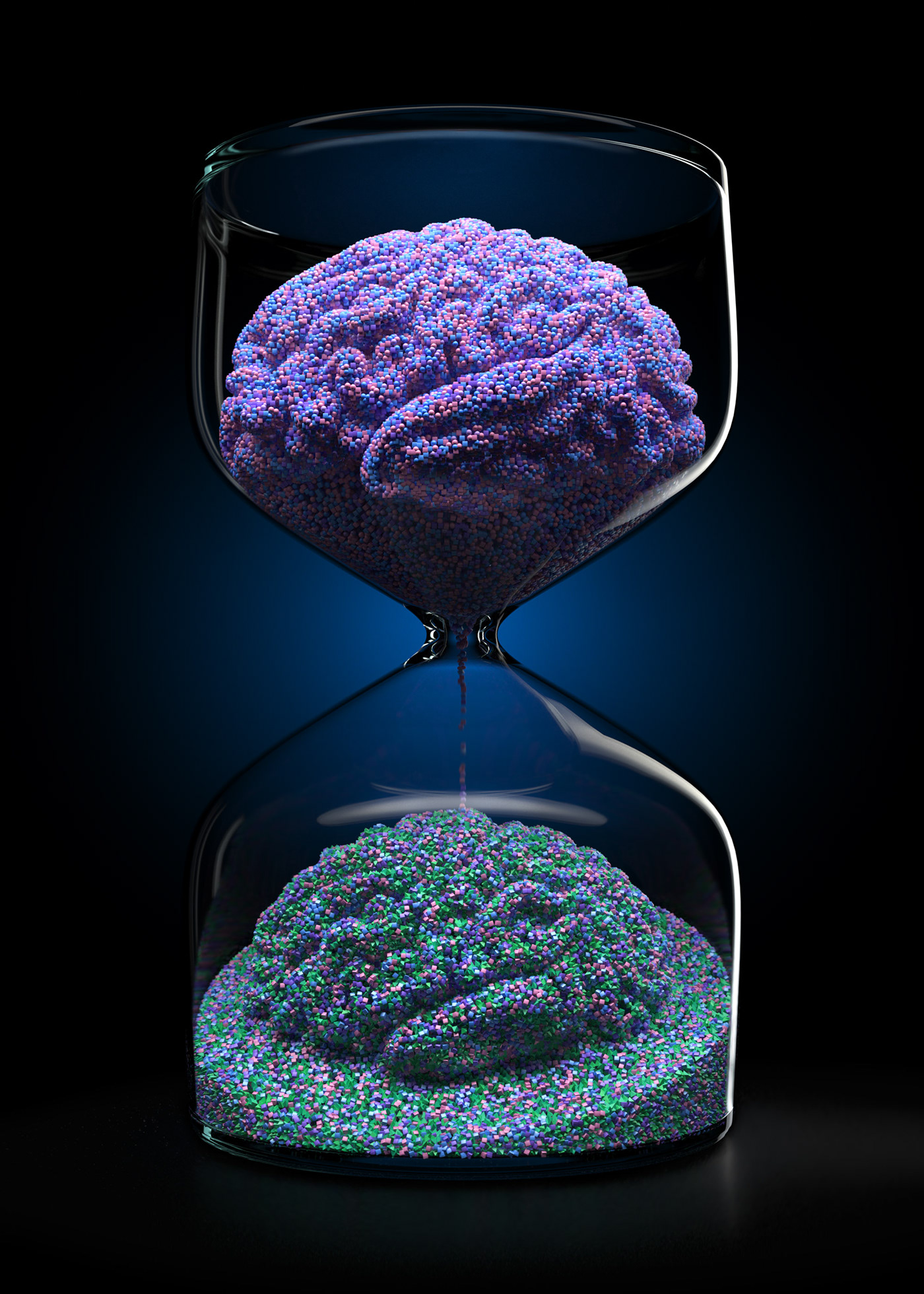
Prompted by ground-breaking research from Yale scientists Zvonimir Vrselja, Stefano G. Daniele, Nenad Šestan, et al., the challenge was to create a cover image illustrating their scientific paper about post-mortem brain revival and cellular function restoration.
To put it bluntly: We can restore the brain after death, can you make an image about it?
To put it bluntly: We can restore the brain after death, can you make an image about it?
All ethical questions aside, the image had to convey the idea of a brain that went through a process of damage and decay but was brought back somehow almost identical, but not quite. To make it even more challenging, this was not some obvious physical damage, but a more subtle one: a kind of damage that happens after your brain dies.
Death and decay over time are symbolized by an hourglass - we know that whatever falls through is reduced to its basic building blocks, unrecognizable to what it originally was. The image visualizes this unexpected landmark as presented in the research: the brain is still there, different yes, but a recognizable and observably functioning.

3D model was built in Modo and replicators were used to populate the brain surface with tiny spheres and cubes, representing different cell structures. Initial rendering tests were done using Modo's render engine but ultimately the Maxwell Render was chosen because of its accuracy and predictable results.

The final image was composited using several render passes with different light positions and intensity.



